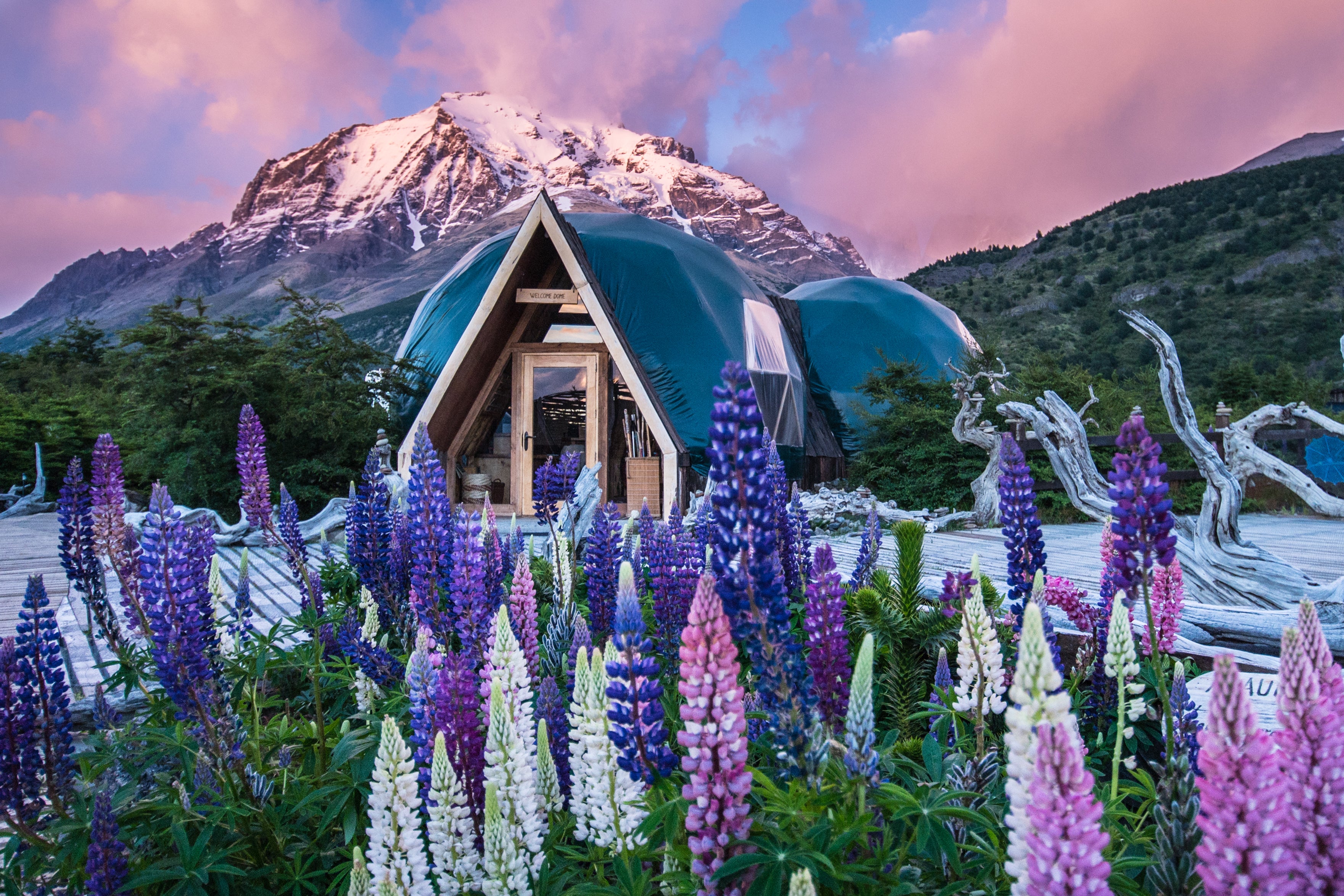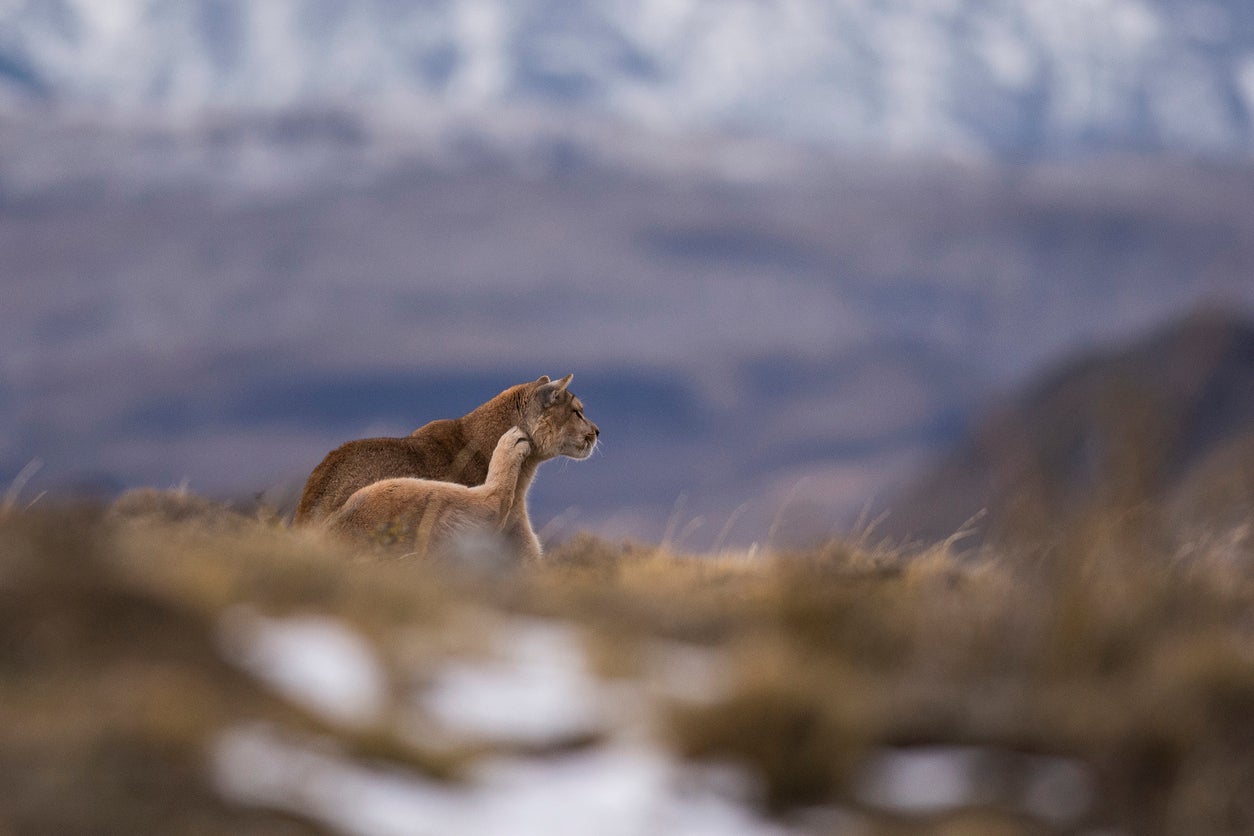
A 181,414-hectare Biosphere Reserve of wind-pummelled steppe and crystalline lakes, by the often-snowy Paine Massif mountain range, Torres del Paine is Chile’s most visited national park. This sublime stretch of the wider Patagonia region ‒ a magnet for nature lovers ‒ harbours some of Earth’s most dramatic mountain landscapes.
However, this sublime stretch of Patagonian wilderness is fragile and within the park, trails originally designed for horses now feel the weight of thousands of pairs of walking boots each day. As the park reopened this month for its first full tourism season since the start of the pandemic, annual visitor numbers look set to return to their 2019 peak of 304,000; if you’re planning to be one of them, a focus on low-impact, sustainable travel is a must. Here’s how to do it.

Hike up to Mirador Las Torres out of season
The jewel in the park’s crown is considered by many to be the 9.2-kilometre trail up to Mirador Las Torres. This viewpoint sits at the base of the three, white-grey granite Torres (“Towers”) for which the park is named, overlooking an enchanting, glacier-fed lagoon. It marks the end of the “W”, a five-day, 80km hiking trail that tracks the southern face of the Paine Massif, with hikers camping or hunkering down in basic mountain huts en route. During the summer months of January and February, an average of 700 hikers per day tramp this trail, with severe erosion to the landscape now an urgent issue.
Las Torres Reserve, a former ranch (now conservation area) along the trail to Mirador Las Torres, is building 3km of brand-new trail, set to be completed by 2024. This path will ease the strain on the existing trail, with the ultimate goal to turn an out-and-back route into a loop. In the interim, the most sustainable way to hike this path is out of season. In September (when the mountain huts along the W trail re-open to hikers after winter), as well as October and April, park visitors drop below 20,000 each month, while temperatures can reach the early teens and bluebird skies, windless days and empty trails are a real possibility ‒ in contrast to the sometimes gale force winds of summer.
A new path will ease the strain on the existing trail, with the ultimate goal to turn an out-and-back route into a loop
Go beyond the (literal) beaten track
The W might be the park’s most recognised hike, but other trails abound, so spread your tourist footprint elsewhere. For a greater challenge, tackle part of the Circuit trail: in its complete form, it’s an eight-to 10-day, 115km path that circumnavigates the Paine Massif, passing around the remote, glacier-stippled backside of the national park for panoramic vistas of the Southern Patagonian Ice Field, before joining the W. However, hiking just the first four days ‒ finishing at Refugio Grey, with a boat across the milky waters of Lago Grey ‒ gives you a blissfully quiet trek on a route capped at 70 hikers per day, all without adding your impact to the already strained W.
To approach the Torres in a different way, you could also join Las Torres Reserve’s resident baqueanos (Chile’s traditional gauchos) in a horseback ride and hike up Cerro Paine, a mountain that lies across the valley. You’ll get a lesser-known, alternative perspective on the park’s namesake peaks – one that’s largely free of fellow tourists, and has sweeping views of aquamarine Lago Nordenskjöld to boot.
The 33 geodesic domes of EcoCamp are just 1km from the trailhead for Mirador Las Torres and 95 per cent of their energy comes from renewable sources
Look for low-impact glamping
There are plenty of independently run lodges in TDP, but the most sustainable are those built without foundations. The 33 geodesic domes of EcoCamp are just 1km from the trailhead for Mirador Las Torres and 95 per cent of their energy comes from renewable sources, while the company has been carbon neutral since 2007. For a more upscale option, Patagonia Camp, just outside the park, has spellbinding views of the majestic Cuernos del Paine ‒ a series of dramatic light-grey and blue-brown peaks at the heart of the Paine Massif ‒ plus handsome, light-filled yurts, five-star dining and an innovative water treatment plant.

Support the conservation of the ‘ghost cats’
With over 100 pumas living in the national park, Torres del Paine now has one of the world’s highest concentrations of the big cat anywhere. And despite being nicknamed “ghost cats” due to their elusive nature, pumas are becoming easier to spot here.
Estancia Cerro Guido, a working sheep ranch on the northeastern edge of the National Park, has shifted from a shoot-on-sight policy to hosting 2,000 hectares of former farmland now dedicated to conservation. Its one-day conservation tours support puma research carried out by its own foundation. Look out for pumas and other key Patagonian species, including the llama’s cousin, the guanaco, Darwin’s rhea, Chilean flamingo, southern grey fox and the Andean condor.
Alternatively, sustainable tour operator Chile Nativo is one of the pioneers of puma tracking here ‒ its guides helped the production team for Netflix’s 2022 series Our Great National Parks capture their extraordinary footage. The two-day puma tracking tours take you out on foot and by car in the company of a local baqueano-turned-puma-tracker, and had a 100 per cent success rate of sightings during 2019.
Getting there sustainably
Situated some 3,200km south of the Chilean capital, Santiago, Torres del Paine is in the wider region of Magallanes, which is usually reached by a three-hour, carbon-belching flight. (And you’ve already taken a 16-or-so-hour connecting flight to get there from the UK). A more adventurous and sustainable alternative is aboard the Navimag, a cargo boat and passenger ferry.
This plies a four-day route south through the remote Patagonian fjords from Puerto Montt (reached via a 13-hour bus journey south of the capital) to Puerto Natales, the gateway to Torres del Paine. Creature comforts are few, but you’ll get unfettered views of some of Chile’s wildest territory, plus possible sightings of Magellanic penguins, orcas and blue whales.







